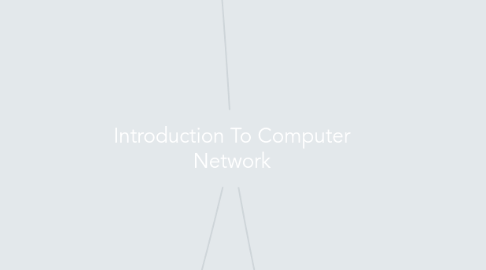
1. 1.1 : Implement the basic concept of Computer Networks
1.1. What is Network?
1.1.1. Combination of ;
1.1.1.1. Computer Hardware
1.1.1.2. Cabling
1.1.1.3. Network devices
1.1.1.4. Computer sofware
1.1.2. Goal ;
1.1.2.1. Allow computers to communicate
1.1.2.1.1. EXAMPLE ;
1.2. Advantages
1.2.1. Data exhanges
1.2.2. Hardware and Software resource sharing
1.2.3. Data security
1.2.4. Increased Communication Capabilities
1.3. Types of Network
1.3.1. Peer2Peer
1.3.1.1. SINGLE computer/node CONNECTED to SINGLE computer/node
1.3.1.2. Advantages
1.3.1.2.1. Less initial expense
1.3.1.2.2. Setup
1.3.1.3. Disadvantages
1.3.1.3.1. Decentralized
1.3.1.3.2. Security
1.3.2. Cilent Server
1.3.2.1. MULTIPLE computer/device CONNECTED to a SERVER
1.3.2.2. Advantages
1.3.2.2.1. Centralized
1.3.2.2.2. Security
1.3.2.2.3. Accessibility
1.3.2.3. Disadvantages
1.3.2.3.1. Expense
1.3.2.3.2. Maintenance
1.3.2.3.3. Dependence
1.3.2.4. Element
1.3.2.4.1. Client
1.3.2.4.2. Server
1.3.2.4.3. NIC
1.3.2.4.4. Backbone
1.3.2.4.5. Segment
1.3.2.4.6. NOS
1.3.2.4.7. TOPOLOGY
1.3.2.4.8. Transmission media
1.4. CATEGORY
1.4.1. L.A.N
1.4.1.1. Simple connection-limited area size
1.4.1.1.1. Single-building LAN
1.4.1.1.2. Multiple-building LAN
1.4.2. M.A.N
1.4.2.1. Connection over the city
1.4.2.1.1. Ipoh net to Kajang net
1.4.3. W.A.N
1.4.3.1. Large size area - over the world
1.4.3.1.1. MY net to JP net
2. 1.3 : Create LAN using Networking Devices
2.1. LAN conectivity Hardware
2.1.1. Router
2.1.2. Switch
2.1.3. Wireless Access Point
2.1.4. Bridge
2.1.5. Mobile Base Stations
2.2. Types of Network Interface Card (NIC)
2.2.1. PCI NIC
2.2.2. PCI Express NIC
2.2.3. PCMCIA Adapter
2.2.4. USB Port
2.2.5. Firewire
2.2.6. Compact Flash NIC
2.2.7. On-Board NIC
2.2.8. Wireless NIC
2.3. Data Transmission Mode
2.3.1. Simplex
2.3.1.1. data flow only in one direction
2.3.2. Half-duplex
2.3.2.1. data can flow in either direction
2.3.3. Full-duplex
2.3.3.1. data can flow in both directions
2.4. Virtual Local Area Network (VLAN)
2.4.1. connected to the same wire
2.4.2. Advantages
2.4.2.1. Ease to administration
2.4.2.2. Broadcast Control
2.4.2.3. Reduced Cost
3. 1.2 : Principles Of Communication in Networking
3.1. Data Elements
3.1.1. Message
3.1.1.1. Information to be communicate
3.1.2. Sender
3.1.2.1. Device that send the messages
3.1.3. Receiver
3.1.3.1. Receives the message
3.1.4. Protocol
3.1.4.1. Set of rules that govern data communication
3.1.5. Medium
3.1.5.1. Physical path from sender to receiver
3.2. Communication Devices
3.2.1. Wired Communication
3.2.1.1. Ethernet
3.2.1.2. Transmission of data over a wire-based
3.2.2. Wireless Communication
3.2.2.1. Information between two or more point that not connected by electrical conductor
3.3. Electronic Communication Methods
3.3.1. Fax
3.3.2. Email
3.3.3. Instant messenger
3.3.4. Telephone/Mobiles
3.3.5. Video Conferencing
3.3.6. Intranet
3.3.7. Chat/IRC
3.4. Transmission Media
3.4.1. Guided Media
3.4.1.1. Twisted-pair cable
3.4.1.1.1. Unshielded Twisted-Pair (UTP)
3.4.1.1.2. Shielded Twisted-Pair (STP)
3.4.1.2. Coaxial cable
3.4.1.3. Fiber optic cable
3.4.2. Unguided Media : Wireless
3.4.2.1. Transport electromagnetic waves without using a physical conductor

